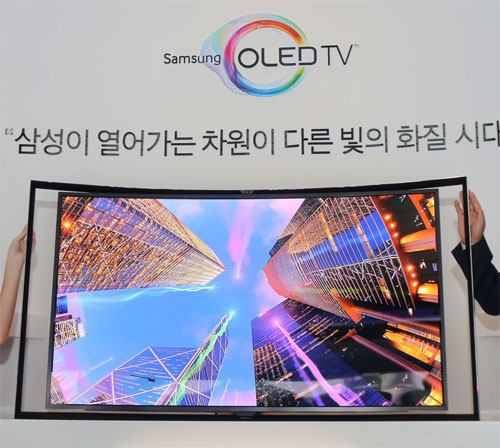Barely a couple of weeks after LG Electronics made a splash by announcing the release of the first commercially available OLED TV in the USA, Samsung has trumped its arch-rival with the launch of its own curved OLED TV, undercutting LG by a hefty $6000, and delivering the “best picture ever” according to American tech website CNet.

Samsung’s KN55S9C curved OLED TV will be hitting North American stores any day now, carrying a price tag of just $9,000, but will that be enough to entice enthusiasts who’re clamouring to get their hands on one?
Keep in mind that $9,000 is still incredibly expensive for a TV, no matter how awesome its razor sharp picture might be. Samsung’s curved OLED is still about three times the price of one of its ‘regular’ HDTVs, and its display resolution is still the bog standard 1080p – less than that of today’s ultra HD 4K TVs which boast four times as many pixels. Of course the benefit of those pixels is only felt if you have enough content – and a close enough viewing distance – to watch on your 4K TV, but the price for such TVs compares favourably to that of OLED, with Sony’s 55-inch X9 series set to go on sale later this month for just $3,999.
Still, considering that just a few weeks ago, Samsung was preparing to sell its curved OLEDs at $15k a pop – just like LG is doing – the lower price tag will be welcome news for AV enthusiasts, but one has to wonder if they might be better off waiting around a few months instead of diving in headlong right now. Samsung claims that the reduced price is possible due to its improved manufacturing yields, but while that statement may be true, it’s almost certainly not the only reason behind its thinking.
What we’re actually seeing here is an all-out price war between Samsung, LG and Sony and the rest, no doubt pressured by a lack of any serious demand for TVs priced at the $15K mark. Don’t forget that the high-end television market is already a tiny one, commanding no more than 1-2% of total global shipments each year, and what with the $15K price tag being at the upper limit of this high-end category, there just isn’t going to be that many takers. Under $10,000, the number of willing buyers is going to be significantly larger, and its likely that this is the market Samsung is trying to appeal to.
As for LG, it seems that Samsung’s move has almost certainly caught them off guard, even if it’s only just announced a similar price cut on its line of 4K televisions. In the next couple of weeks we’ll probably see a further response from LG, and anyone with $9,000 burning a hole in their pockets might want to hold off for now to see what that is.